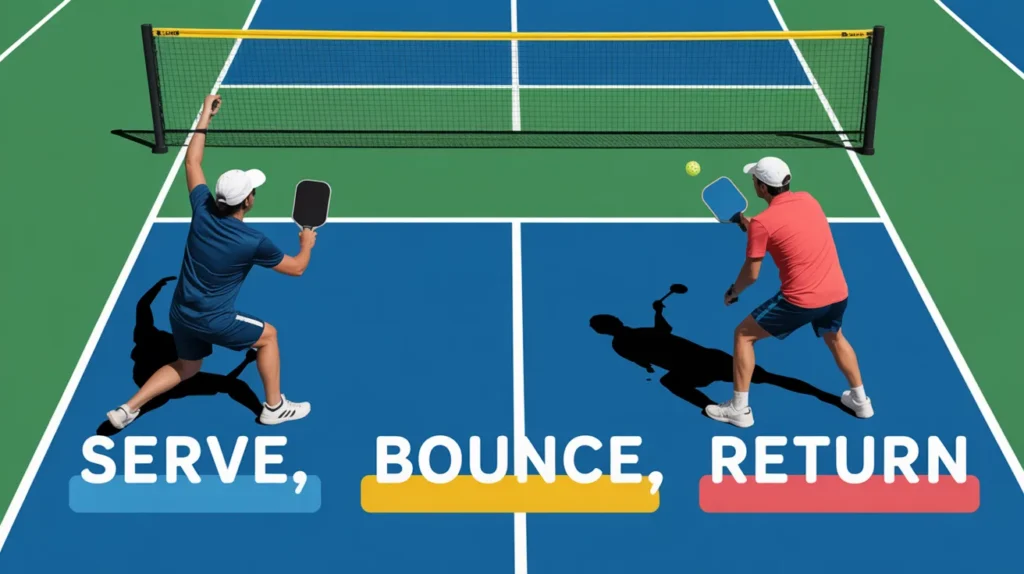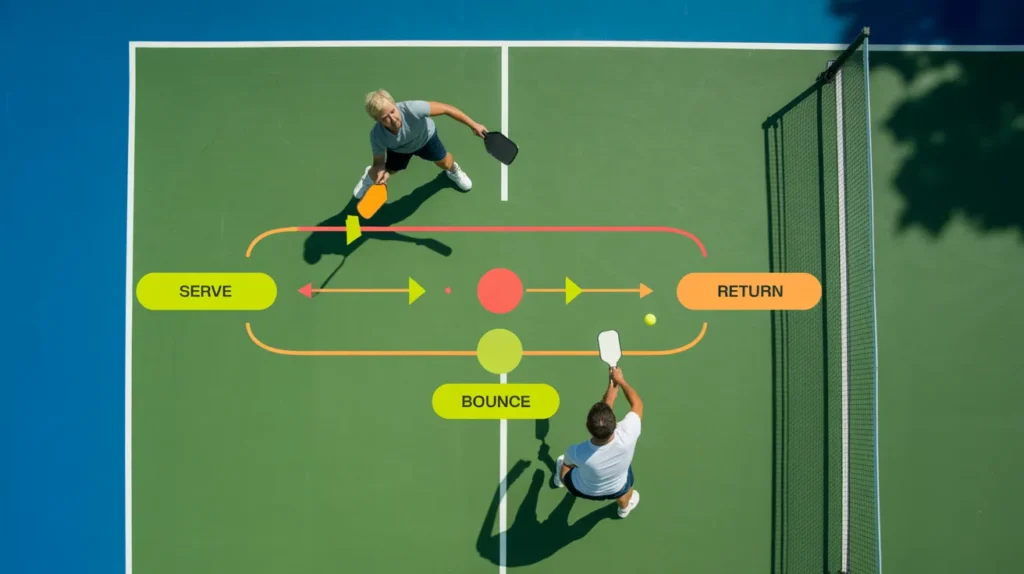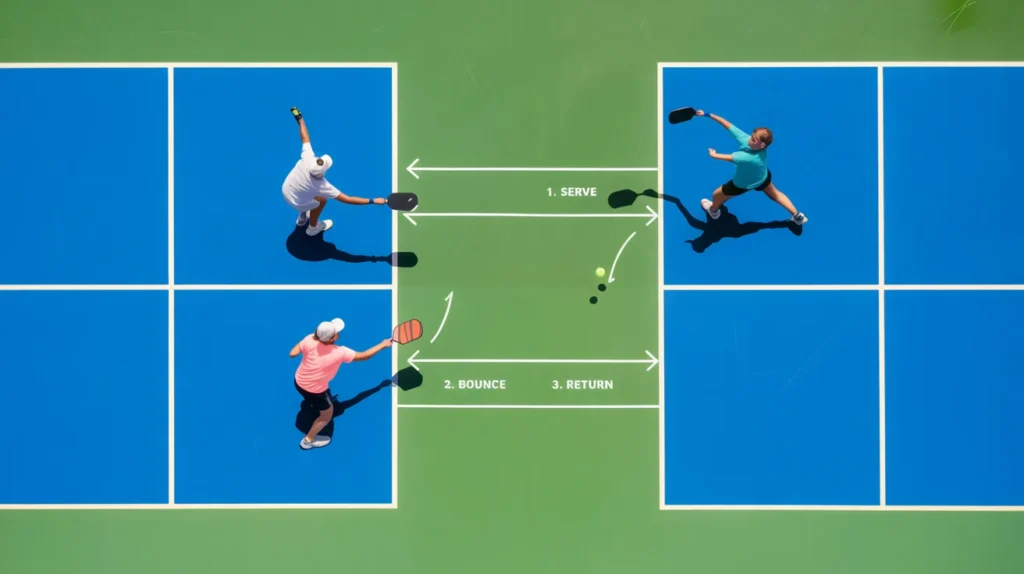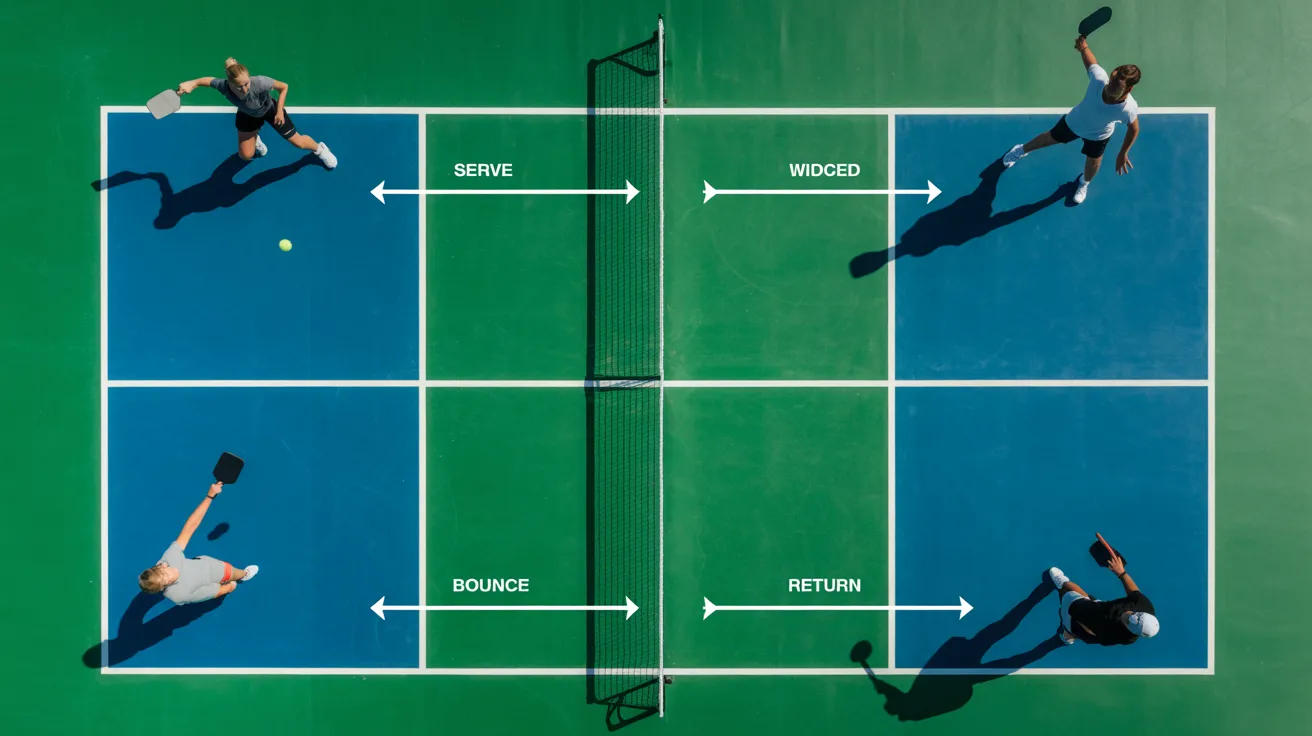So, What’s the Deal with Pickleball?
If it feels like everyone you know is suddenly playing pickleball—it’s because they are. What started as a backyard mashup of tennis, ping pong, and badminton has grown into a full-blown phenomenon. Courts are popping up everywhere. Retirees, college students, weekend warriors—everyone’s picking up a paddle, but you can get ahead of the game with our master pickleball in 7 steps: A Beginner’s Blueprint to Winning Fast.
A Quick Origin Story
Back in 1965, three dads in Washington state invented pickleball to keep their kids entertained. Fast-forward to today, and it’s one of America’s fastest-growing sports, with more than 8 million players and counting.

Why It’s So Addictive
The court is smaller, the learning curve is gentler, and the vibe is wildly welcoming. Whether you’re 25 or 75, athletic or not, pickleball meets you where you are. It’s competitive without being cutthroat—and that balance is the magic.
Your Step-by-Step Guide to Playing Pickleball (Even If You’ve Never Touched a Paddle)
Let’s strip away the jargon and make it simple. Here’s how you go from “What’s a kitchen?” to winning your first game—with clarity and confidence.
1. Start with the Essentials: Paddle, Ball, Court
First, gear up—no need to overthink it.
-
Paddle: Think oversized ping pong paddle. Graphite or composite is ideal for control.
-
Ball: Looks like a wiffle ball but designed for bounce. Outdoor versions are heavier; indoor ones are softer.
-
Court: 20×44 feet with a special 7-foot “no-volley” zone near the net called “the kitchen.”
Wear court shoes that support side-to-side movement. (Running shoes = bad idea.)
2. Understand the Rules (They’re Simpler Than You Think)
-
Play to 11 points, win by 2.
-
Only the serving team can score.
-
The ball must bounce once on each side before anyone volleys (aka hits it out of the air).
That’s it. No complex rotations or obscure violations. You’ll get the rhythm fast.
3. Learn to Serve (And Do It Legally)
Serving in pickleball is underhand and intentional.
-
Contact must be below the waist.
-
The serve must land diagonally across the court.
-
You get one chance—no second serve like tennis.
🎯 Winning tip: Aim deep and to the opponent’s backhand. It sets the tone early.

4. Master the Two-Bounce Rule
This is what makes pickleball so unique.
-
You serve.
-
Your opponent lets it bounce before returning.
-
You let that return bounce before hitting it.
Now you can start volleying. This rule slows down the start of rallies and prevents people from rushing the net immediately. Smart and fair.
5. Shots Matter: Dinks vs Drives
Pickleball isn’t about power—it’s about touch and timing.
-
Dinks: Soft, short shots that land just over the net, ideally in the kitchen. They’re strategic traps.
-
Drives: Fast, low shots meant to apply pressure.
Know when to use each. Dinks frustrate. Drives punish. Mixing them is where you start controlling the game.

6. Own Your Footwork & Positioning
Where you stand is just as important as how you swing.
-
Get to the net after returning the serve. It’s where most points are won.
-
Move as a unit in doubles—no lone wolves.
-
Avoid “no man’s land” (the awkward middle zone). You’re vulnerable there.
Great pickleball is about being in the right place at the right time—not smashing the ball harder than everyone else.
7. Play Smart to Win Early
Here’s how beginners start racking up wins:
-
Target the weaker opponent (yes, it’s fair game).
-
Hit lower, slower shots to force mistakes.
-
Talk to your partner—communication prevents chaos.
-
Make fewer errors than your opponents. That’s it.
And remember: you don’t need flashy shots. You need patience, placement, and purpose.
Real Talk: Newbie FAQs
“Can I step into the kitchen?”
Yes—just not while volleying. If you hit the ball out of the air while in the kitchen, it’s a fault.
“What’s the difference between singles and doubles?”
Doubles is more strategic and forgiving. Singles? Way more running.
“Can I practice by myself?”
Absolutely. Use a wall, or set up simple drills with a ball feeder or rebounder.

